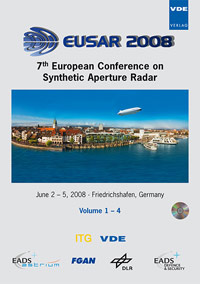PolInSAR Signatures of Alpine Snow
Konferenz: EUSAR 2008 - 7th European Conference on Synthetic Aperture Radar
02.06.2008 - 05.06.2008 in Friedrichshafen, Germany
Tagungsband: EUSAR 2008
Seiten: 2Sprache: EnglischTyp: PDF
Persönliche VDE-Mitglieder erhalten auf diesen Artikel 10% Rabatt
Autoren:
Morrison, Keith (DAPS, Cranfield University, Shrivenham, Swindon SN6 8LA, UK)
Rott, Helmut; Nagler, Thomas (ENVEO, Technikerstraße 21a, A-6020 Innsbruck, Austria)
Prats, Pau (Microwave and Radar Institute, DLR, PO Box 1116, D-82234, Wessling, Germany)
Rebhan, Helge; Wursteisen, Patrick (ESA-ESTEC, Noordwijk, Netherlands)
Inhalt:
Snow cover appears as a key indicator in climate change, and the ability to remotely measure the physical properties of snow is of vital importance. Current model-based approaches used to interpret satellite and airborne data need much stronger experimental confirmation. PolInSAR is a promising emerging technique for the measurement of snow depth. It exploits the polarisation dependence of scattering mechanisms to estimate scattering phase centre heights, which can be extrapolated to retrieve snow depth. Both modelling work and previous experimental campaigns indicate that the X and Ku-bands are particularly suited for retrieving the physical properties of a snow pack as they are sensitive to both the surface and volume characteristics. However, no comprehensive assessment of the operational potential and limitations of PolInSAR are yet available for snow. This work investigates the conditions under which PolInSAR produces accurate results with respect to snow parameters such as structural features and metamorphic state, as well as technical sensor specifications. A field study of the PolInSAR X- and Ku-band response of alpine snow was carried out with the UK’s Ground-Based SAR (GBSAR) system in a measurement campaign in the Austrian Alps during early 2007. Complementary detailed snow state and structural parameters were also recorded, as well as environmental meteorological data. A brief outline of the experimental technique is presented, and an example of an interferometric product.


